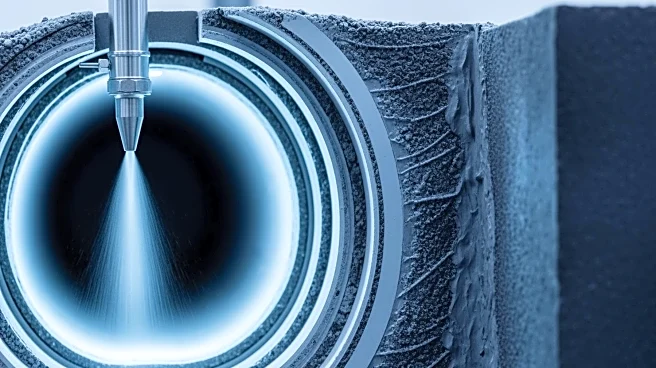What's Happening?
A recent study has analyzed the uplift behavior of shield tunnels induced by synchronous grouting. The research focused on 12 consecutive ring segments, examining the impact of grout pressure and segment self-weight
on tunnel stability. The study assumes that grout slurry can fill shield tail gaps promptly, balancing soil pressure and ensuring stratum stability. Key factors influencing uplift include buoyant grout pressure, grout viscous resistance, segment self-weight, inter-ring frictional resistance, and bolt shear resistance.
Why It's Important?
Understanding the mechanics of tunnel uplift is vital for civil engineering projects, particularly in urban areas where infrastructure stability is paramount. The findings could improve tunnel construction techniques, reducing risks associated with uplift and ensuring safer, more reliable underground transport systems. This research may influence future engineering standards and practices, potentially leading to more efficient and cost-effective construction methods.
What's Next?
Further research may explore different grout formulations and their impact on tunnel stability. Engineers might apply these findings to real-world projects, adjusting construction techniques to mitigate uplift risks. Collaboration between researchers and industry professionals could lead to advancements in tunnel engineering and construction technology.
Beyond the Headlines
The study highlights the importance of precise engineering calculations and the role of empirical data in developing effective construction strategies. It underscores the need for ongoing research and innovation in civil engineering to address complex challenges in infrastructure development.











